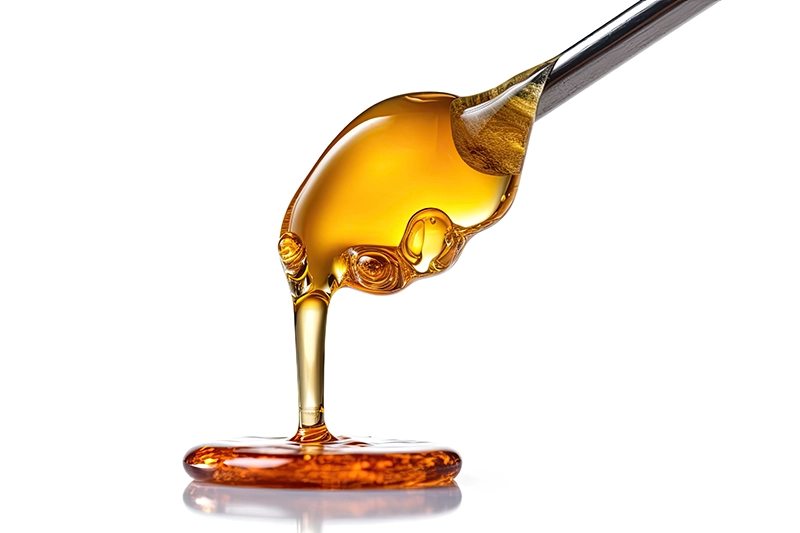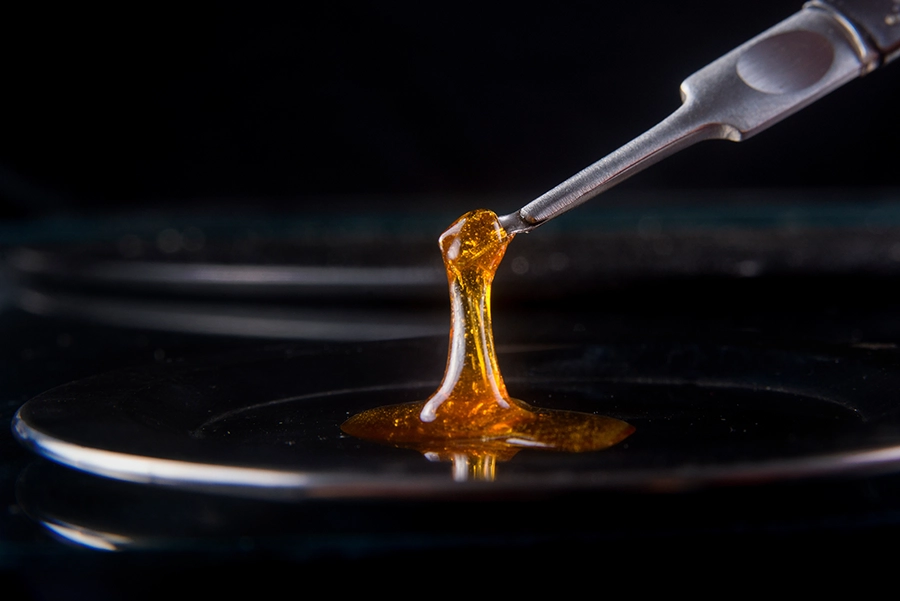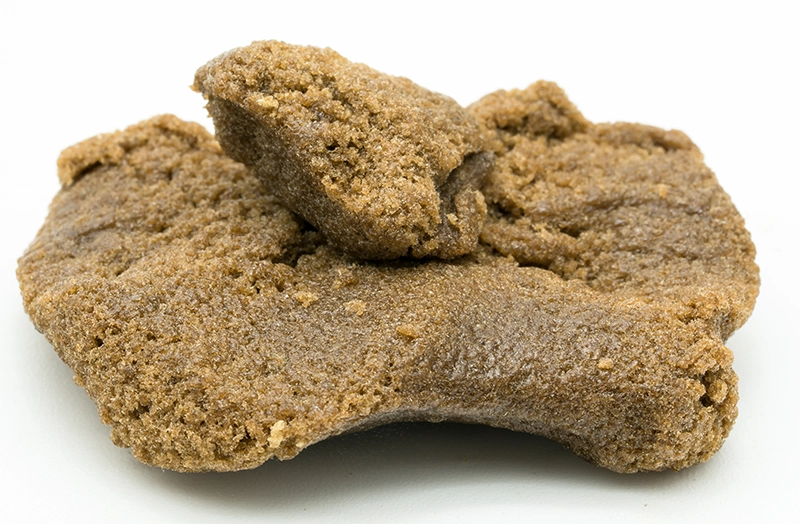The Different Types of Solventless Extraction Methods

Solventless extraction methods are gaining prominence in the cannabis industry as a clean and environmentally friendly alternative to solvent-based techniques. These methods, which include rosin pressing, dry sifting, and cold water, don’t rely on chemical solvents, eliminating the risk of solvent residues in the final product. These methods also use lower temperatures, ensuring that the delicate terpenes responsible for the final product’s aroma, flavor profile, and therapeutic effects remain intact and unaltered.
Rosin Pressing

Rosin pressing is a simple yet effective solventless technique that uses a combination of heat and pressure to extract cannabinoids and terpenes directly from the cannabis flower, hash, or kief. The cannabis material is typically wrapped in a fine mesh or filter bag and placed between two heated plates. By pressing the plates together at controlled temperatures (usually between 190 and 220 degrees Fahrenheit), the essential oils, cannabinoids, and terpenes are squeezed out of the plant material, forming a sticky, resinous substance known as rosin.
Tools & Equipment Needed
- Rosin Press
- Heat Plates
- Parchment Paper (for collecting rosin)
- Filter Bags (for filtering out fine particles)
Benefits
- Purity: Rosin pressing is a purely mechanical process that doesn’t involve solvents, ensuring the final product is clean and free of potential chemical residues.
- Terpene Preservation: The relatively low temperatures used in this method help preserve the terpenes better than many solvent-based methods.
- Simplicity & Safety: Rosin pressing doesn’t involve handling potentially dangerous solvents, making it safer for producers and consumers.
Scalability
The downside of rosin pressing is that it may be challenging to scale. This method is typically done in small batches, so scaling up would mean investing in multiple presses or larger, more industrial equipment that can maintain the same quality and efficiency. The process can also be labor-intensive, involving manual preparation, monitoring, and collection.
End-Products
- Direct Rosin
- Infused Products (edibles, topicals, etc.)
- Tinctures & Capsules
Dry Sifting

Dry sifting focuses on separating trichomes (the resinous glands containing cannabinoids and terpenes) from the rest of the plant material. This separation occurs when dried cannabis is agitated over a mesh screen or series of screens. The mechanical action causes the trichomes to break off from the plant and fall through the mesh, where they are collected as kief, which can be pressed into hashish or used as is.
For higher purity, the sifted material can be passed through finer screens, which progressively filter out plant matter and more effectively isolate trichomes.
Tools & Equipment Needed
- Sifting Screens
- Mechanical Shakers (shakers can automate the sifting process)
- Microscopes (for inspecting the quality of trichomes)
Benefits
Like all solventless methods, dry sifting requires no solvents, which improves the safety of the final product. It also effectively separates trichomes, resulting in a potent product with high cannabinoid and terpene concentrations. It’s also one of the simplest extraction methods, requiring minimal technical knowledge and equipment.
Scalability
Automation makes scalability possible. However, the process can generally be labor-intensive, requiring constant monitoring and adjustment to ensure optimal yield and purity. Due to variations in plant material and the manual nature of the process, it can also be difficult to achieve consistent product quality and yields in large-scale operations.
End-Products
- Kief (direct result of dry sifting)
- Hashish (the result of kief being pressed under low heat and pressure)
- Infused Products
Cold Water

This popular solventless method leverages the insolubility of cannabinoid-rich trichomes in ice-cold water to separate them from the rest of the plant material. The cold causes the trichomes to become brittle and detach easily from the plant. The mixture is then agitated gently to separate the trichomes, which are heavier than water and sink to the bottom. After agitation, the mixture is passed through a series of mesh bags (bubble bags) with varying micron sizes. Each bag captures trichomes of different sizes.
Tools & Equipment Needed
- Bubble Bags/Mesh Bags
- Large Mixing Containers
- Agitation Tools (wooden spoons or mechanical agitators)
- Draining Buckets
Benefits
This method’s benefits are similar to dry sifting and rosin pressing in that it minimizes the degradation of terpenes, produces a clean product without solvent residues, and is simple and straightforward to perform.
Scalability
Scalability is possible but difficult. First, scaling this process would require significant amounts of space and water. Additionally, the need for multiple filtration steps and manual agitation could make large-scale operations time-consuming and labor-intensive. Achieving consistent quality and yields could also be challenging due to technique and plant material variations.
End-Products
- Bubble Hash
- Infused Products
Considerations
If you’re considering adopting a solventless method, consider what type of end product(s) you want to make, your production volume goals, budget, available space, and the expected quality and potency of the extracts. We always recommend starting first with what types of end products you want to make.
View the table below for a better look at how these three methods compare based on those factors:
| Extraction Method | Rosin Pressing | Dry Sifting | Cold Water |
| End Products | Resin, edibles, topicals, and tinctures | Primarily kief and hashish, but can be used as an additive in pre-rolls, edibles, and other infused products | Primarily bubble hash |
| Expected Production Volume | Small-to-medium | Medium-to-large | Small |
| Cost | Moderate to expensive, depending on the quality and amount of presses purchased | Less expensive than rosin pressing, although mechanical sifters will increase costs | Lower equipment costs but higher operational costs when compared to rosin pressing and dry sifting |
| Available Space | Requires little space | Generally requires little space—more space is needed if using mechanical sifters | A lot of space required for large containers and water storage |
| Quality/Potency of Product | High-quality, can maintain the integrity of the whole-plant profile | Quality varies, and additional steps may be required to achieve the purity seen in rosin or bubble hash | Quality can vary based on process control but generally produces very pure, high-quality products |
Get More Help From MACH Technologies
Since our founding, MACH Technologies has been committed to helping companies automate and scale their operations. We specialize in engineering and manufacturing specialized equipment, including our fully automated Solventless Terpene Extraction Equipment and Solventless Ice Water Trichome Separation Equipment. As a turnkey manufacturer, we also provide implementation guidance, on-site employee training, and ongoing support.
Please contact us today if you have questions about solventless extraction or if you want to learn more about how our solventless equipment works.
